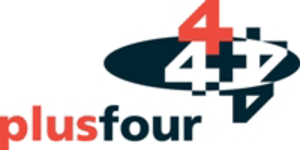A spectrum of differences
Diversity and differences are invisible without the right methodology. This is the challenge in measuring sexual identity.
The typical survey collects data by asking people to check a box in answer to the questions posed. The issue with this commonplace procedure is that it force-fits the results into predetermined categories. But if people self-identify in other ways, this method won’t capture that because it doesn’t permit it. People are not allowed to ‘be’ anything other than the options provided.
We see what we measure, and no more. So, if survey answers are bounded by in-going categories, then, to a greater or lesser degree, what we see will be artificial and incomplete. This is especially problematic for sexual identity, for which difference is the rule not the exception.
This is not to say that surveys can’t get it right. It is only to say that the typical survey treats diversity as a set of several discrete categories. Yet, when it comes to sexual identity, what we have found in our work at Kantar Consulting is that sexual identity is a spectrum of fine-grained differences that can be difficult to cluster into a small number of meaningfully distinct, self-contained groups. In reality, boundaries are blurry. Perhaps this has always been the case, but it is certainly the case today. For lots of people, sexual identity is fluid and mixed, and thus not fairly or completely captured by a measurement scheme that relies on fixed dividing lines.
Of course, fixed categories work well for many people. A measurement scheme must account for that as well, so a proper classification tool has to be sensitive enough to account simultaneously for fixed and fluid sexual identities. We accomplish this at Kantar Consulting with a two-part sequence of questions.
The first part uses traditional categories to ask people to state their sexual orientation. The second part asks people to use a Likert scale anchored by opposite sorts of sexuality to rate themselves on their self-identity, their behaviour and their attraction. Through this method, each individual respondent can be profiled uniquely. Nobody is forced into some category defined ahead of time. Results bear out the precision of this methodological approach.
The question on sexual orientation is the standard question used in most surveys, and our results on this question match other surveys in terms of the percentage who state that their orientation is LGBT. Other surveys find that this ranges from 3-5%, which is essentially the same as the 4% found in our work.
But the Kantar Consulting measure goes beyond self-reported orientation. The nuances of fluidity surface in the self-ratings on identity, behaviour and attraction. For example, a person who reports a heterosexual orientation could self-identify as mostly straight while being equally attracted to both sexes, yet for a variety of reasons and circumstances, be behaviourally involved with someone of the same sex. When people with fluid identities like this example are added to people who prefer a more categorical, fixed LGBT identity, the percentage who are not strictly heterosexual is closer to 10% of the US population.
A notable proportion of people who self-report as heterosexual in a forced-choice orientation question demonstrate a significant degree of fluidity in their answers to identity, behaviour and attraction. Our work demonstrates clearly that even heterosexuality is not one thing. There is a lot of difference within the seemingly straightforward category of heterosexual.
Sexual identity is complex. Correctly specifying it is particularly important in an era of greater personalisation and data-intensives predictive models. For one-to-one marketing and customised product design to succeed, the dimension of identity has to be better specified than just a few high-level, preset categories. It is not enough any longer to get it approximately right. Customers expect brands to get it exactly right.
The spectrum of differences that constitutes diversity in today’s social context is more than sexual identity. Our work at Kantar Consulting finds that people with a sexually fluid identity are younger, and younger people are also more ethnically and racially diverse. This ‘polycultural’ life experience compounds the sense of difference and uniqueness felt by people with fluid sexual identities. All of which adds to the imperative for brands to better reflect and respect the complex of differences shaping expectations and aspirations.
More refined methodologies are required for the personalised precision needed nowadays. Brands will never keep pace with the dynamism roiling the marketplace without research approaches that match these rapidly changing realities. Diversity is the future, but it is diversity characterised by an ever-greater spectrum of differences. This requires ever-more individually targeted solutions, which begins with research methods that bring the continuum of identity into a clarifying focus.
J. Walker Smith is chief knowledge officer, brand & marketing, Kantar Consulting

We hope you enjoyed this article.
Research Live is published by MRS.
The Market Research Society (MRS) exists to promote and protect the research sector, showcasing how research delivers impact for businesses and government.
Members of MRS enjoy many benefits including tailoured policy guidance, discounts on training and conferences, and access to member-only content.
For example, there's an archive of winning case studies from over a decade of MRS Awards.
Find out more about the benefits of joining MRS here.











0 Comments